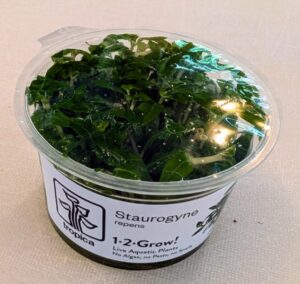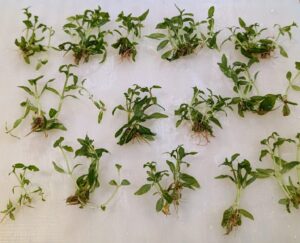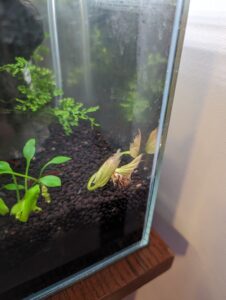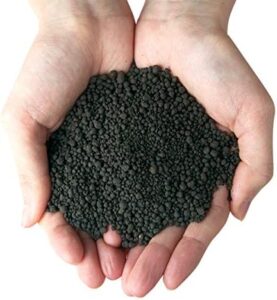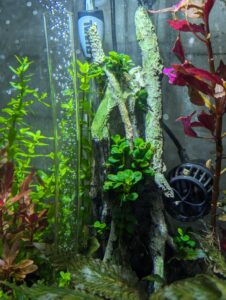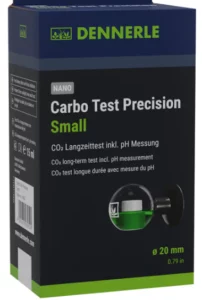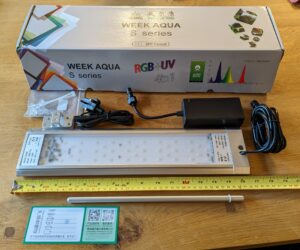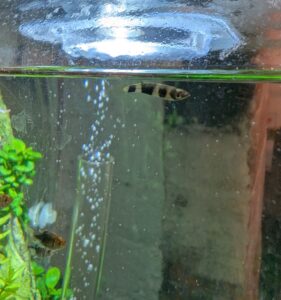
I picked up some banded panchax, also known as clown killifish, for the Fireplace Aquarium. The local fish store (LFS) only had four of them and they were all female. This is because the males have showier fins so mostly that’s what people buy. Nevermind – I think the females look great. Friendly LFS person explained you can have a group of females but not a group of males because the males get territorial with each other. LFS person did NOT explain that banded panchax need soft acidic water… that’s not what we have in Cambridge. That said, it’s been a couple weeks now and the panchax seem to be doing great. The water in the Fireplace Aquarium is definitely not soft. Out of the tap it isn’t acidic either, although the CO2 injection does lower the pH. I hope they will be ok.
